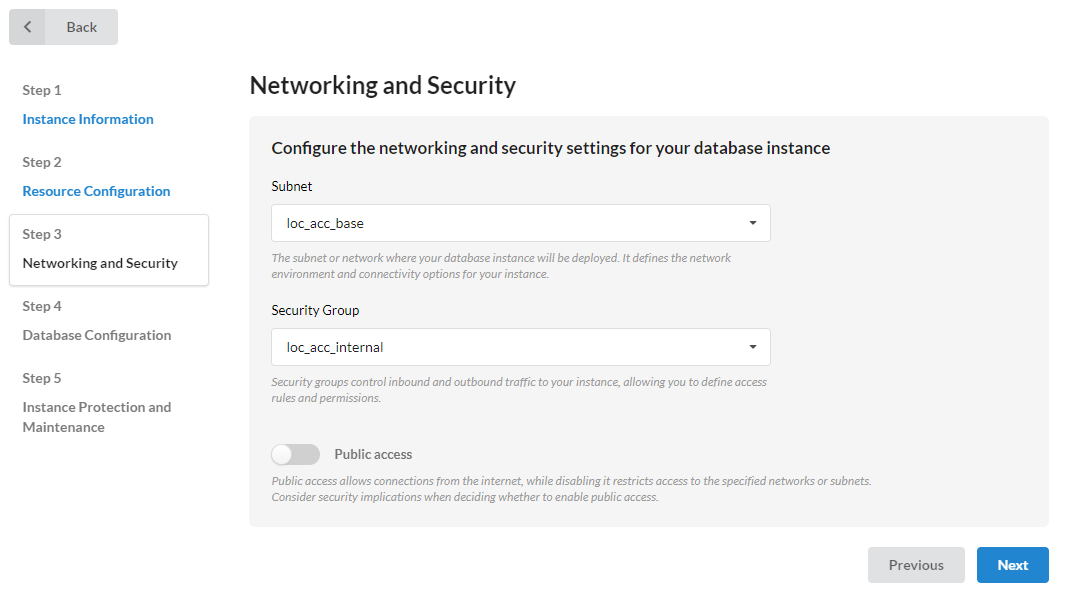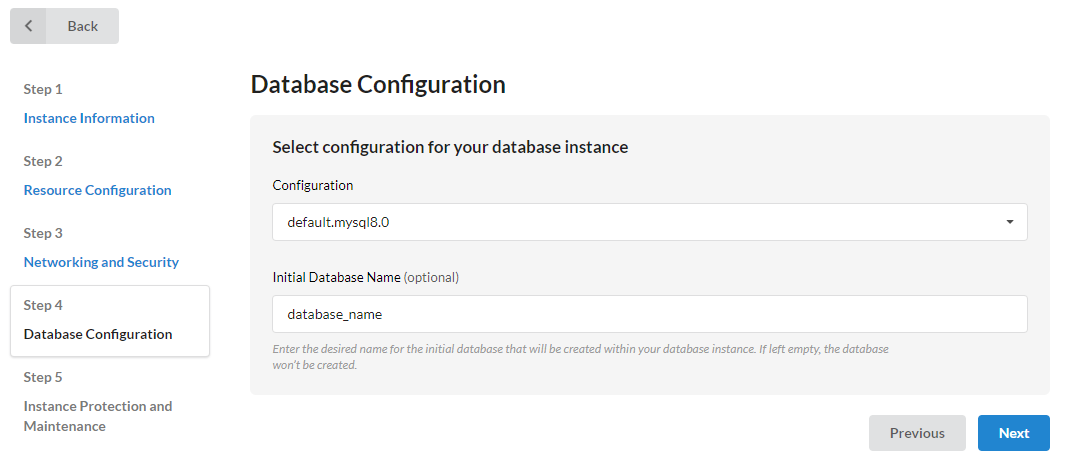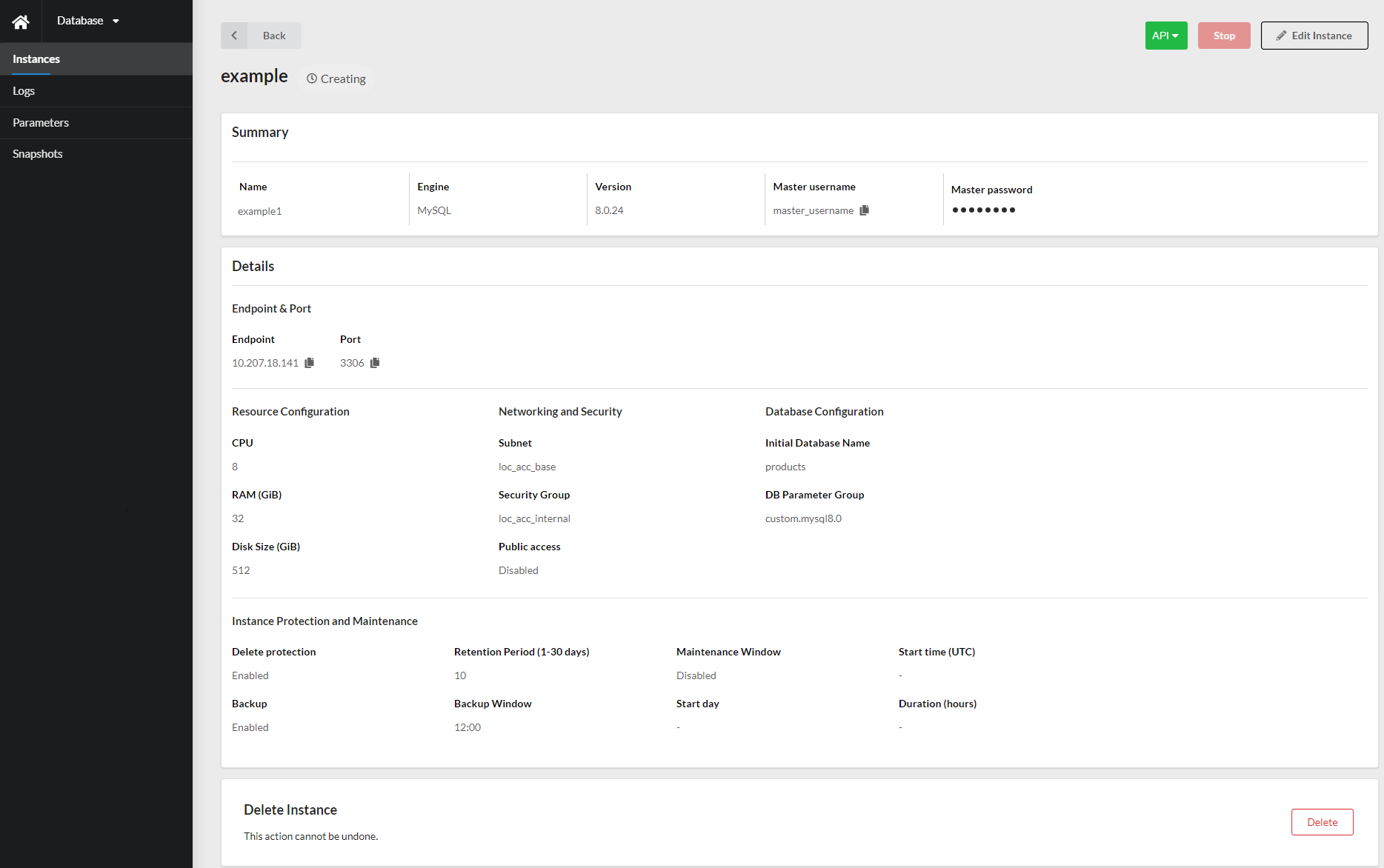Instances¶
DB instance is an isolated database environment running in the cloud. This is the primary building block of the ICDC Database service.
A DB instance can contain multiple user-created databases and can be accessed using client tools and applications designed to interact with a standalone database instance.
DB instances can be created and modified using the ICDC Database API operations or by navigating to the Instances tab.
Using the side menu, users can edit and delete instances.
Instance statuses¶
Depending on ongoing processes, instances can have different statuses:
| Status | Description |
|---|---|
Creating |
database instance is currently being created (during its creation, the database instance is not available) |
Stopped |
database instance has been stopped |
Deleting |
database instance is in the process of being deleted |
Available |
database instance is healthy and accessible |
Maintenance |
ICDC Database is applying a maintenance update to the DB instance |
Modifying |
database instance is being modified based on the client's request |
Backing-up |
database instance is presently being backed up |
Starting |
database instance is in the process of starting |
Stopping |
database instance is being stopped |
Storage-full |
DB instance has reached its storage capacity allocation limit. This is a critical status, and if it occurs, it is recommended to resolve the issue immediately. To do this, you need to increase the storage scale by changing it in the DB instance settings. |
Instance creation¶
ICDC Database creates a master user account for DB instance as part of the creation process.
This main user (master user) has rights to create databases and perform delete, select, update, and insert operations on tables.
To create an instance, follow these steps:
- Navigate to the
Instancetab. - Click on the
New instancebutton. -
Fill in the information necessary to create an instance.
Instance Information:
Instance name;Engine– select the database type for the instance being created;Version– select the version/release of the selected database;Master username;Master password.
Master password
When creating a database instance, it's essential to set a master password, which can be changed at any time using the
ICDC Database APIoperations or by navigating to theInstancestab. You can also modify a user's master password and manage users using standard SQL commands.Resource Configuration:
CPU- number of CPU cores for the instance;RAM- the amount of RAM allocated for the instance;Disk size- storage volume for the database.
Networking and Security:
Subnetor the network in which the database instance will be deployed. This defines the network environment and connection settings for the instance.Security groupfor the instance. Security groups manage traffic to and from an instance, allowing you to define access rules and permissions.
Users can also choose to enable
Public accessfor the instance. Public access allows connections from the internet, but disabling it restricts access to specified networks or subnets.Important
Please take security precautions when deciding to enable public access.
Database Configuration:
Configuration- configuration settings for the database instance;Initial database name- the desired name for the initial database.
Instance protection and maintenance:
Delete protection- when you select protection for an instance, you cannot delete it without editing this parameter;Backup- backup storage period and backup window;Maintenance Window- the period during which pending changes or database maintenance will be applied.
-
Click
Create.
The created instance will be displayed in the Instances tab.
After selecting the created instance, the user can access a summary of the instance information, including its details.
The Stop button, which allows the user to pause the operation of an instance, is only available when the instance status is Available. If the instance has the Stopped status, the Start button becomes available to resume the instance.
To edit an instance, the user can click on the Edit Instance button. It is also possible to delete an instance using the Delete button.
Irreversible action
Delete action is irreversible.
Roles and Permissions¶
| Action | Member | Admin | Operator | Owner |
|---|---|---|---|---|
| Create Instance | ✔ | ✔ | ✔ | ✔ |
| Edit Instance | ✔ only own | ✔ | ✔ | ✔ |
| Delete Instance | ✔ only own | ✔ | ✔ | ✔ |
| Stop/Start Instance | ✔ only own | ✔ | ✔ | ✔ |







